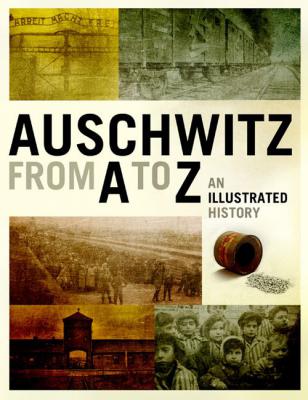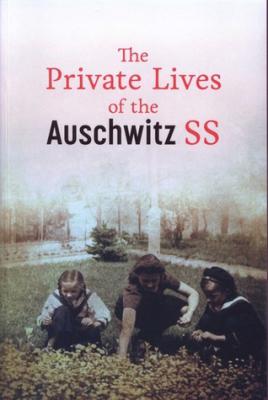
Auschwitz from A to Z: An Illustrated History of the Camp

The Private Lives of the Auschwitz SS
Auschwitz from A to Z: An Illustrated History of the Camp
Oswiecim: Auschwitz Birkenau State Museum, 2013
207 pages
The Private Lives of the Auschwitz SS
Cywiński, Piotr, Jacek Lachendro and Piotr Setkiewicz,
Oswiecim: Auschwitz Birkenau State Museum, 2014
134 pages
Auschwitz-Birkenau, located in Oswiecim outside of Krakow, Poland, has become a symbol of the Holocaust. One of the main reasons that the Nazi regime established the camp there was because it was a central intersection of roads and railways. After the Holocaust, it may be argued that Oswiecim will forever be overshadowed by Auschwitz-Birkenau, the largest of the Nazi concentration camps and extermination centers. Not only has Auschwitz become a symbol of the Holocaust due to its geographical size, but also because the Nazis and their collaborators sent approximately 1.1 million Jews there from all over Europe to undergo selection and to be systematically murdered in gas chambers.
This review will focus on two relatively new books that the Auschwitz-Birkenau State Museum has recently published in English: Auschwitz from A to Z, a lexicon of the camp, illustrating its history; and The Private Lives of the Auschwitz SS, a compilation of accounts of Polish household servants who worked for German camp personnel in the 1940s.
A to Z is an extremely useful book for guides to Poland. The compilation of period photographs, sketches drawn by prisoners, copies of documents and artifacts is well chosen. The index of over 300 alphabetical entries is also helpful to readers who are interested in specific, concise information about prisoners, sub-camps, camp personnel, terms and other aspects. Private Lives highlights the recollections of Polish employees who were assigned to work in the homes of SS officers, including guards and physicians, as well as other camp personnel.
Both books are rich with information about daily life in the large camp complex. For example, one of the entries in A to Z focuses on the plunder of goods, mostly left behind by Jewish victims.1 Young Polish workers also refer to plunder in Private Lives, with SS personnel bringing home items such as jewelry, china and clothing. For example, Karl and Hildegard Bischoff apparently amassed a great deal of stolen property. According to Maria Pawela, “
The Bischoffs had a lot of gold and valuables. I only saw this before they left Oswiecim. When she was packing their things, she took out two quite large tin chests. As they saw, I was knocked off my feet by the sight of those valuables. When the front line approached Oswiecim, the Bischoffs departed, placing those chests full of gold and a few clothes in a small vehicle with a canvas covering.”2
Prakseda Witek, aged 14, remembered that, “The Kitts…brought lots of things home from the camp. Every so often they sent off to Germany a large steamer trunk full of the most various valuables, material, perfumes, soaps and so forth.” 3 In contrast, she wrote that Käthe Rohde “had nothing at home that came from looted goods. …she found that repulsive.” 4 A few of the testimonies in this volume may be useful to educators who wish to discuss ethical questions with their students concerning the return of assets and removable property plundered from victims of the Third Reich – a topic that continues to be reported by the media in many countries.
The book provides short biographies of the SS personnel, together with photographs and sketches of the various dwellings in which these young Polish girls, often teenagers, worked during the Holocaust. The statements shed light on the everyday lives of Nazi families living next to a death factory, as well as on the various personalities of the SS officers and their wives. The book also reveals the relations between camp prisoners and these young Polish female workers, or lack thereof due to fear of punishment. Under the directives of the German Labor Administration (Arbeitsamt), contact between Polish workers and camp prisoners was forbidden. As Witek noted, “I filled out a form in which I undertook not to have any contact with prisoners and to keep everything I saw in the area around the camp secret.”5
Nevertheless, Boguslawa Glowacka, who worked for the Kalaus family, recalled, “
Prisoners delivered pure water to SS men’s houses, came to do heavy chores in the house or to work in the garden, remodeled houses and apartments, etc.; This created occasions for contact. Yet we took all precautions and talked only when the prisoner trusted his Post [guard] and, in addition, when the guard couldn’t see us.”6
However, even the wives of German officers did not always strictly adhere to rules concerning contact with prisoners. For instance, according to Aleksandra Stawarczyk, who worked in the household of Dr. Horst Fischer, “
When prisoners were working at our place, and I found a way to do it, I would give them my breakfast. Some prisoners ate it on the spot and others took it back to the camp. As for Frau Fischer, she sometimes offered the prisoners cigarettes, and when they were working in the garden in the rain or cold she instructed me to give them something warm to drink, and some bread.” 7
Clearly, this book provides a glimpse into the gray zones of human behavior despite the strict directives of the Arbeitsamt.
It is surprising that there are some discrepancies regarding biographical information, especially since Piotr Setkiewicz is an excellent historian. For instance, A to Z states that Karl Fritzsch was born in 1913,8 whereas Private Lives lists his date of birth a decade earlier in 1903.9 Private Lives says that Gerhard Palitzsch was born in 1913,10 yet A to Z says 1903.11Auschwitz from A to Z: An Illustrated History of the Camp, 130. The arrests of Palitzsch are absent from his biographical abstract from Private Lives.12 The date of birth13 of the first commandant of Auschwitz, Rudolf Höss, is also inconsistent in these volumes, as are other details relating to his career in the SS.14
Moreover, some readers may find the title of Private Lives to be misleading, as the book is not an exposé about Auschwitz officers’ romantic affairs, but rather a collection of memories. The Nazi extermination center, Auschwitz-Birkenau, has long since become an icon of the Holocaust. The amount of visitors to this memorial museum continues to rise from year to year, and by the end of 2015 an estimated 1.7 million people from 150 countries toured this Holocaust-related authentic site. In preparation for youth study tours to Poland, educators should consult these publications by the Auschwitz Birkenau State Museum and their rich, updated website.
- 1.Auschwitz from A to Z: An Illustrated History of the Camp, 133-134.
- 2.Setkiewicz, Piotr (ed.) The Private Lives of the Auschwitz SS (Oswiecim: Auschwitz Birkenau State Museum, 2014), 42.
- 3.Setkiewicz, The Private Lives of the Auschwitz SS, 28.
- 4.Setkiewicz, The Private Lives of the Auschwitz SS, 23.
- 5.Setkiewicz, The Private Lives of the Auschwitz SS, 25.
- 6.Setkiewicz, The Private Lives of the Auschwitz SS, 62.
- 7.Setkiewicz, The Private Lives of the Auschwitz SS, 85.
- 8.Auschwitz from A to Z: An Illustrated History of the Camp, 69.
- 9.Setkiewicz, The Private Lives of the Auschwitz SS, 31.
- 10.Setkiewicz, The Private Lives of the Auschwitz SS, 55.
- 11.Auschwitz from A to Z: An Illustrated History of the Camp, 130.
- 12.Setkiewicz, The Private Lives of the Auschwitz SS, 55.
- 13.Auschwitz from A to Z: An Illustrated History of the Camp, 85.
- 14.Setkiewicz, The Private Lives of the Auschwitz SS, 103.

